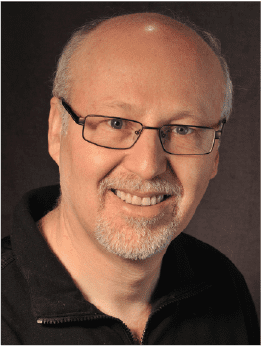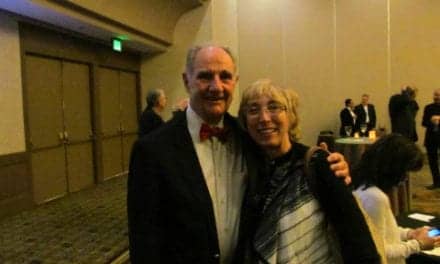Blog Page | Hearing Review June 2014
By Marshall Chasin, AuD
The following is from Marshall Chasin’s February 25, 2014 article at his Hear the Music blog at HearingHealthMatters.org. —David H. Kirkwood, hearinghealthmatters.org editor
Recently, I have been reading The Sound Book by Trevor Cox and came across something I had never heard of before: musical roads. Musical roads, as the name suggests, are roads that can “play” a song while you are driving on them. The first report that I saw about a musical road was in 1995 in Denmark. Called the Asphaltophone, it was an artistic installation piece that used raised (mini-speed) bumps in the road to play a song.
In 2007, a Japanese construction worker noted that, after scraping up a part of the road with his bulldozer and then driving over the scraps, he was able to hear an almost musical sound. Since then, Japan has created three “melody roads,” which were designed to attract tourists and keep drivers from speeding. They can be heard optimally at exactly the speed limit. Unlike the Danish road, these roads had grooves cut into the asphalt at precise distances from each other and of appropriate depths. The distance spacing defined the pitch and the depth defined the sound level.
South Korea followed suit and created a “singing road” using the same groovey technology. However, the intent in South Korea was for safety. Statistics show that about 68% of traffic accidents occur because of driver inattentiveness or falling asleep at the wheel. At the proper speed, the song was Mary Had a Little Lamb. There is some foreshadowing to this song, and as will be seen in Part 2 of this blog, lambs again rear their cute heads.
In 2008, the city of Lancaster, California built its first musical road. Lancaster is about a 1-hour drive north of downtown LA. The town selected the finale from the William Tell Overture, best known as the theme music from the old Lone Ranger radio and TV program. That was an unfortunate choice of song, since the faster you drive, the better it sounds. At least it’s not as bad as Brahms’ Lullaby, which would put drivers to sleep. Initially, there were complaints from local residents, so the portion of the road that was musical was moved away from residential areas. This road is named after the Honda Civic and was used in a Honda commercial. A YouTube video of someone driving on the road is shown here:
Personally, I could not identify it as the William Tell Overture… I suspect that the road engineers made some calculation errors.
It is interesting to think about what songs and melodies would be a good choice for the highway. Some melodies may sound odd if played off tempo; others, like the William Tell Overture, might be the subject of a legal battle if someone ticketed for speeding complained that he was entrapped into going too fast by the local municipality and that the musical road was a trick to encourage people to speed in order to fill the city coffers.
My personal favorite piece of music is the Gavotte by Francois-Joseph Gossec, and this would make a wonderful piece of road music. It’s lively enough to keep the driver awake but not encouraging them to speed. Although my daughter would disagree, I am sure that she decided to take up the clarinet after she heard me practicing this piece of music.
Cutting a Road Instead of a Record
It is also interesting to calculate the exact distances necessary for any particular tune. And, since it only involves multiplication and division, even a high school student should be able to do these calculations.
Let’s start with middle C—which is at 262 Hz—and let’s assume that we are traveling along the highway at 60 mph (or 100 km/h in the rest of the world). How far apart should the grooves be in the road so that 262 of them were hit each second by a car going 100 km/h?
First, we need to change the units to common units; we can’t compare hours and seconds, nor can we compare kilometers to meters. We start with the equation:
f = v/wavelength
where f is frequency (262 Hz or 262/second) and v is the rate that the car passes by each groove (100 km/h).
Since there are 3600 seconds in each hour, 100 km/h is the same as saying 100 km/3600 seconds or 0.0277 km/second. Now changing km to meters, 0.0277 km/second = 27.7 m/second.
Using this new “normalized” velocity in the formula, we have 262/sec = 27.7 m/sec/ wavelength. Solving for “wavelength,” we have 27.7/262 = 0.1057 meters or about 10 cm (that’s 4 inches for our American friends). So, for a middle C (262 Hz) to be heard, each groove in the road needs to be about 4 inches or 10 cm apart if the car is traveling at 60 mph or 100 km/h.
Now, here comes the interesting part, and this is where you come in. Given that middle C will be heard with grooves that are 4 inches apart, calculate the groove spacing for the entire scale (including sharps) from middle C right up to the octave above it (524 Hz). HINT: Each note (and there are 12 of them in each octave) is the 12th root of 2 higher than the note just below it—which is about 1.059.
The answer is available in Part 2 of this blog at: http://hearinghealthmatters.org/hearthemusic/2014/musical-roads-part-2
Original citation for this article: Chasin M. Driving rhythms of the asphaltophone: musical road. Hearing Review. 2014;21(6):10.
Chime in at: http://hearinghealthmatters.org/hearthemusic/2014





